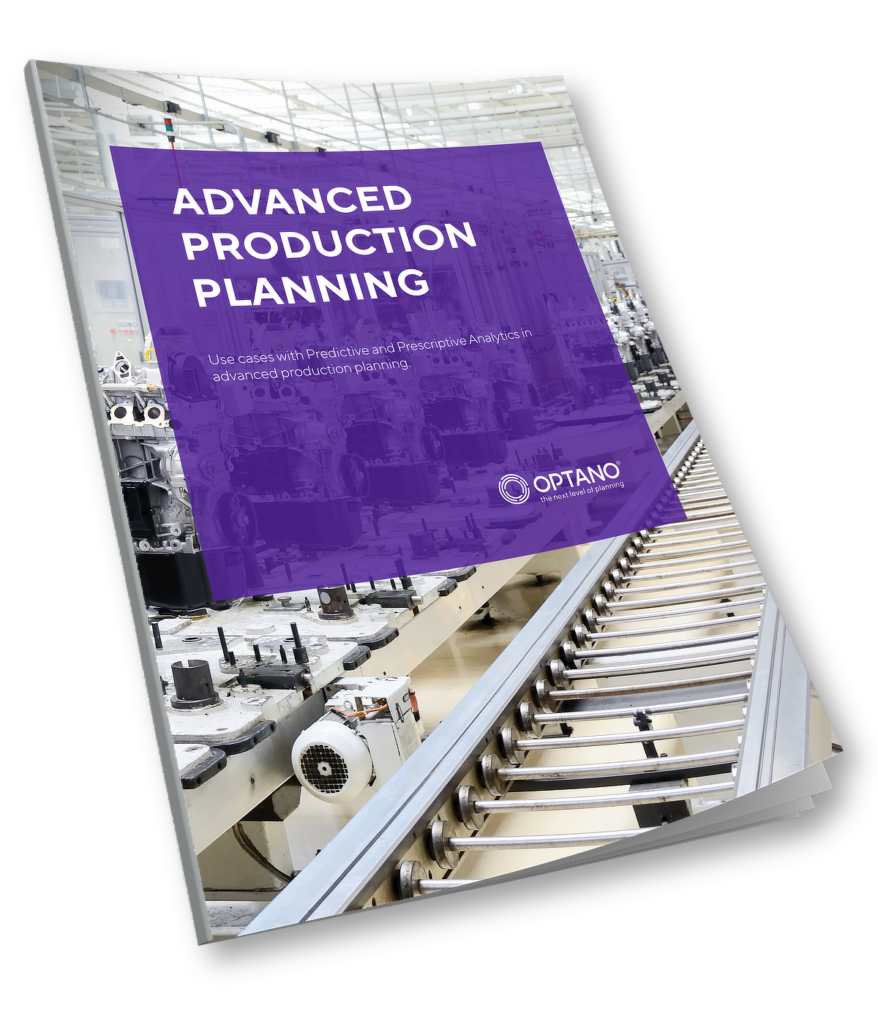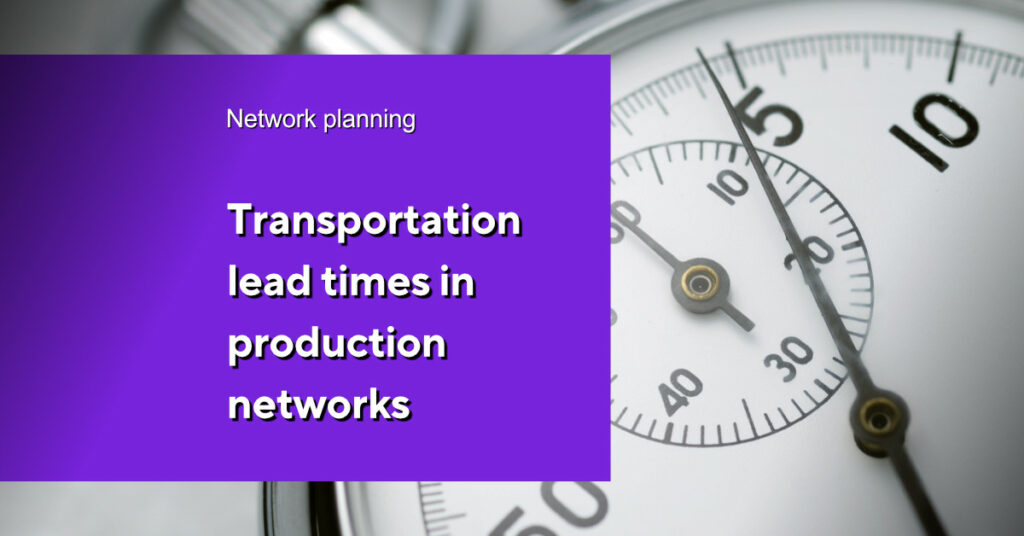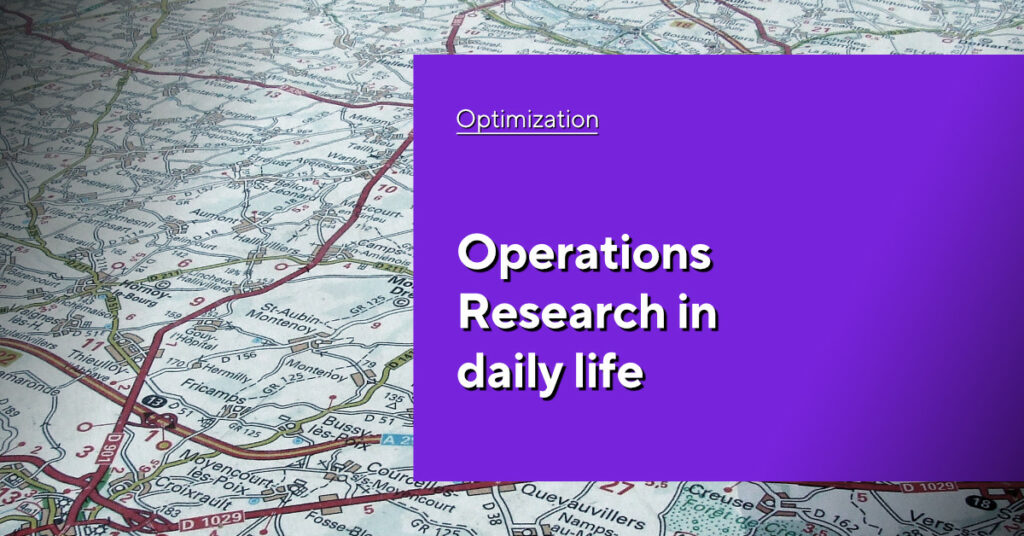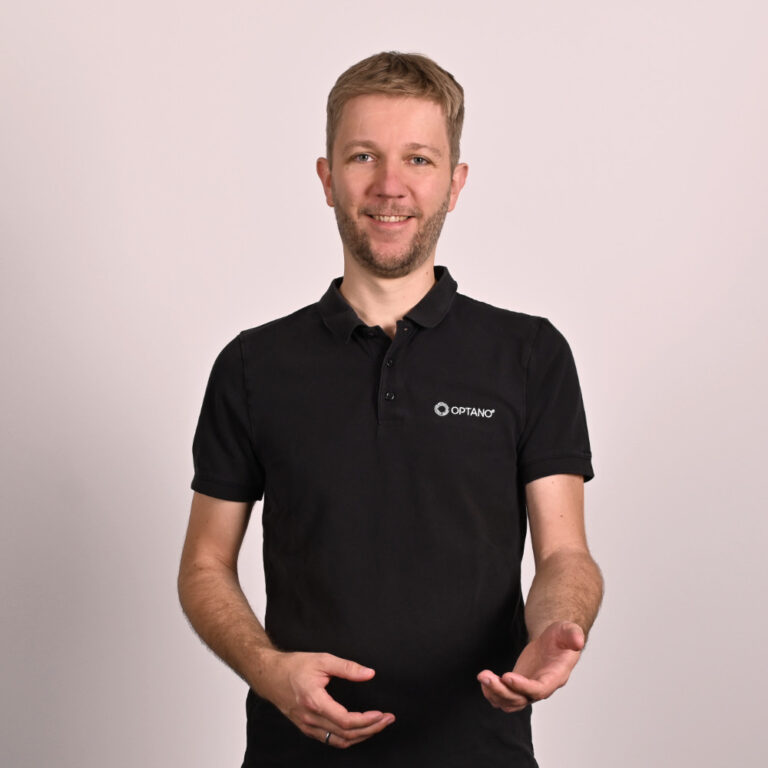Warehousing vs.
Lean Production
The fall has arrived and fashion retailers’ first autumn/winter collections are now in the stores as well as online. Just a few decades ago, retailers would have one collection per season. These days, they bring out several collections to keep pace with the trends that change after just a couple of months, maybe even weeks. I can tell you, as the parent of a very fashion-conscious teenager, it is hard work keeping up with what is currently “in” and what isn’t.
The same applies to the fashion industry itself: As the demand volatility for this so-called “fast fashion” increases, the ratio between inventory and return becomes more critical. Companies need faster response times to ensure that sufficient goods and materials are constantly in stock. Striking the right balance is tricky: if a manufacturer under-estimates the demand for a certain item, this leads to lost sales and aggrieved customers. On the other hand, over-estimating demand leads to excess stock which usually has to be sold at a discount.
This problem is not just confined to the fashion industry alone, other industries face the same challenges. So, how can companies plan their production efficiently to avoid the above-mentioned dilemmas? Two general strategies that are usually applied are “Make to Stock” and “Make to Order”. Let us consider their pros and cons with regard to demand fluctuations and look at how advanced technology tools can support companies in making the right strategic decisions.
Make to Stock: Security first and foremost
The Make to Stock strategy provides security in two respects. Here, goods are manufactured and then put into interim storage until they can be sold. This makes a production planner’s work a whole lot easier. Both personnel and material resources can be planned and deployed at maximum capacity. The number of set-up times is reduced. This not only saves costs initially but also removes a potential source of error which could lead to more rejects. In such a setting, the throughput in production would tend to be high whereas rejects would be at a fairly low level.
A further advantage of Make to Stock are the short delivery periods. This not only increases customer satisfaction but ideally it also binds them to the company on a long-term basis. High levels of stock also help to cushion demand fluctuations during peak periods.
Of course, this all comes at a price. Storage space is expensive. Not only does it have to be acquired, it also needs to be maintained, insured and managed – and these are only the direct storage costs. Stored materials also tie up capital since they run up manufacturing costs which cannot be capitalized upon immediately. While high inventory during peaks in demand can guarantee security, it also poses a major risk. If demand changes abruptly in a negative direction and the inventory cannot be sold, it loses its value and has to be depreciated. If the goods are perishable, the problem gets worse. With regard to customer demand, Make to Stock has a further disadvantage: customers want more and more individualized products. However, the more versions of a product there are, the less convenient it is to keep large quantities in stock.
Pros
- Time pressure is taken out of planning
- More time to plan personnel, resources and other capacities
-
The number of set-up procedures can be
reduced - Throughput tends to be high and the number of rejects low
-
Short delivery times increase customer
satisfaction
Cons
- Direct storage costs are high
-
Capital is tied up because of goods in
shortage. - Risk of high depreciation when demand slumps
- Unsuitable for goods of which there are many different versions
More interesting articles
Make to order: Profit first
With the Make to Order strategy the focus is clearly on profit and returns. Production only begins when an order has been placed. With this strategy, there are no costs which are not covered by an order. This guarantees maximum security to manufacturers. There are also other benefits. Since there is an order for every product, distribution warehouse space is kept to a minimum. This saves direct and indirect storage costs. In addition, less capital is tied up in stored goods and there is a lower risk of having to depreciate products that cannot be sold. One advantage for the customer should not be under-estimated: a Make to Order strategy usually permits a higher degree of individualization as the product has not been manufactured at the time of placing the order. This meets the current consumer trend to have customized products.
However, the Make to Order strategy does have its drawbacks. If the manufacture of a product only begins after the order has been placed, then this poses a major challenge for production planners. They have to ensure that personnel and resources can be deployed appropriately, set-up times need to be reduced and throughput increased. When you have a continuous flow of incoming orders, plans have to be changed frequently and the planning quality sinks as a result. The costs that have been saved in the distribution warehouse are offset by the costs of the warehouse. Here, there must be enough reserves of all the products to execute customers’ orders as early as possible. And while we are on the subject of delivery times: with this strategy, these are naturally higher than when selling goods that are already in stock. Furthermore, the strategy is prone to peaks in demand as production capacity can only be increased to a limited extent.
Pros
-
All production costs are covered by a
customer order - Storage space for distribution warehouses can be kept at a minimum
- Capital is not tied up in goods in sotrage
- No risk of depreciation in the event of a slump in demand
- Customers can be offered customized products (to a limited extent)
Cons
-
Plans must be rescheduled frequently in
production planning - The planning quality tends to drop when changes are made frequently
- The material for all versions of a product has to be in storage
- Delivery times are longer than for the sale of goods that are already in stock
- Prone to peaks in demand (production can only be ramped up to a limited extent)
Next Level Planning: The best of both worlds
As is always the case when we have two diametrically opposed alternatives, one has an advantage over the other. The ideal scenario would be to combine the advantages of both and reduce the disadvantages. With mathematical optimization, both are possible. Let us show you how…
Demand forecasts with Predictive Analytics
What is evident in both of the above strategies is that they can only work if they are based on good demand forecasting. With Make to Stock, demand forecasts ensure that you only manufacture and store products for which there actually is demand. With Make to Order, forecasts are crucial to decide which raw materials and semi-finished products have to be stored in order to safeguard against demand fluctuations.
When deploying Predictive Analytics, the system calculates how likely it is that a specific product can be ordered in a specific quantity at a specific time. At OPTANO, additional Machine Learning methods are also deployed. Its appeal is that you only need to “train” the system with real data and it automatically detects correlations and cross-dependencies. It is also possible to integrate external data into the calculation, e.g. meteorological data, and the quality of the forecasting will increase noticeably.
Production plans with Prescriptive Analytics
While production planning probably produces better results with Make to Stock than Make to Order due to its long lead times, it can only offer customers a limited variety of products. However, the trend is moving towards customized products. Using Prescriptive Analytics, as OPTANO does, optimal production plans can be created at the touch of a button. From millions and millions of possibilities, the system calculates, for example, the combination with the lowest set-up times, the optimum use of materials, the highest throughput and the lowest personnel costs (by avoiding overtime or shift bonuses as far as possible).
Making strategic decisions using what-if scenarios
Using what-if scenarios can be of immense support when making strategic decisions since they allow you to calculate the effects of a decision in advance. Based on various demand scenarios, different versions of a situation can be calculated using a company’s real costs and KPIs to determine the impact of a change in strategy. What’s more, the system can suggest the right solution and procedure to help reach a previously defined objective (for example, to optimize profit). This is an invaluable advantage in strategic planning.
Keep up-to-date with mathematical optimization
We are living in a fast-paced era in which fashion is not the only thing that keeps changing. Businesses have to keep up with the times and can no longer afford to have rigid production strategies. Fortunately, many have realized this and are making adjustments accordingly. Even so, comparatively few companies are making use of the possibilities that mathematical optimization can offer in order to improve their processes. All too often, the good old spreadsheet is still used in manual planning which solely relies on the planner’s own wealth of experience. Yet, manual planning assumes that there are only a few changes in a defined setting. These conditions no longer exist. Manual planning, just like the clothes that were all the rage a few months ago, is out of fashion. It’s time for change – and this is where OPTANO can help. Why not contact us? We can help you keep your products – and your strategies – up-to-date.
Have you already got your factsheet on this topic?
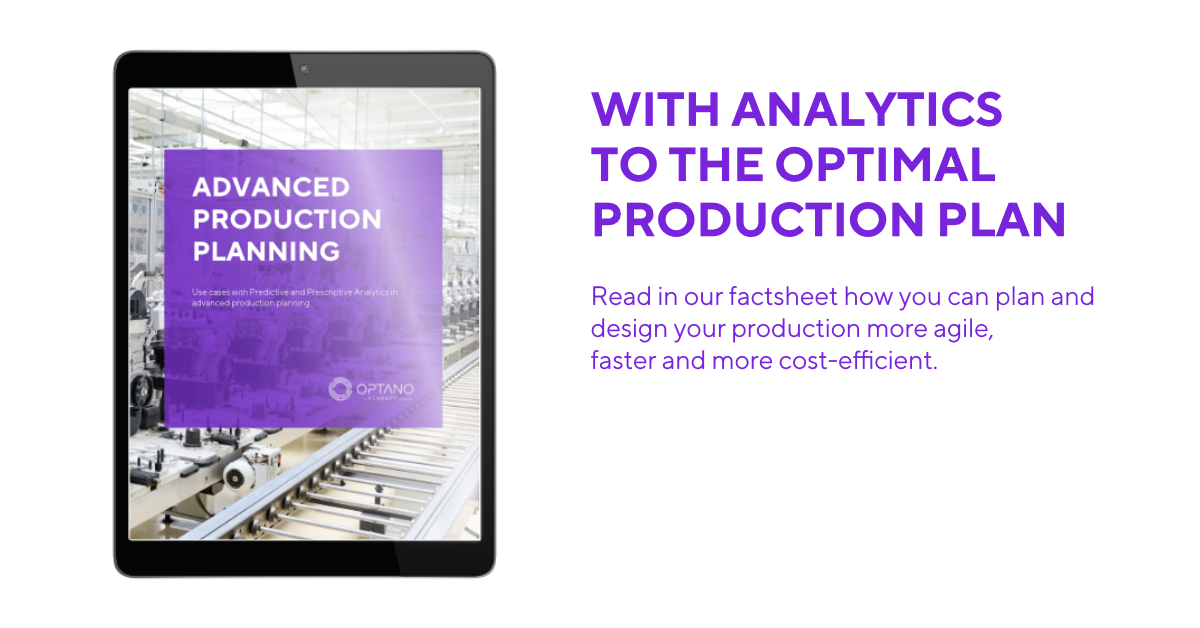
In our factsheet Advanced Production Planning we present some of the use cases of Predictive and Prescriptive Analytics in modern production planning which you can download here.
To obtain our factsheet, all you need to do is enter your contact details in the space below. A pop-up window will then open to download the whitepaper. Please note that by providing us with your email address, you agree that we may contact you on this topic. You may revoke this agreement at any time by contacting [email protected].
- 6 October 2021


